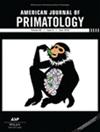Assessing the Sociodemographic Factors Associated With Mycobacterium tuberculosis Complex Infection Among Free-Ranging Long-Tailed Macaques (Macaca fascicularis) in Thailand
Abstract
The threat of disease transmission at the intersection of human-wildlife interfaces underscores the urgent need for detailed studies on the transmission of human-borne pathogens across species, especially among nonhuman primates in urban areas. This research focuses on the social and demographic determinants of Mycobacterium tuberculosis complex (MTBC) infection in free-ranging long-tailed macaques (Macaca fascicularis) in Thailand. Behavioral observations and noninvasive biological specimens (freshly defecated feces and rope-baited oral samples) were collected from 98 long-tailed macaques living in Wat Khao Thamon, southern Thailand, between August 2021 and February 2022. We detected the MTBC antigen using IS6110 nested-PCR method in 11 out of 98 monkeys (11.22%). Logistic GLMs revealed that the risk of MTBC acquisition was higher among macaques with frequent human-macaque interactions, whereas increased social grooming of conspecifics showed a nonsignificant trend toward reducing the risk. Our findings suggest that anthropogenic exposure increases the risk of MTBC infection among macaques, but this risk may be mitigated (socially buffered) by increased within-group affiliative interactions. More generally, the potential for increased disease prevalence in wildlife with frequent human interactions or reduced social buffering highlights the need to consider animal socio-demography when developing strategies to understand and prevent the transmission of diseases between humans and wildlife.


 求助内容:
求助内容: 应助结果提醒方式:
应助结果提醒方式:


